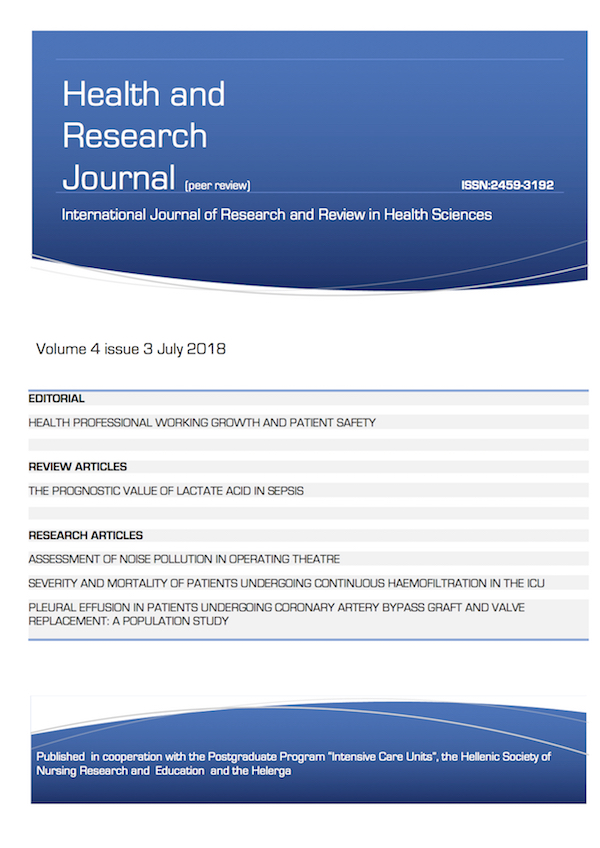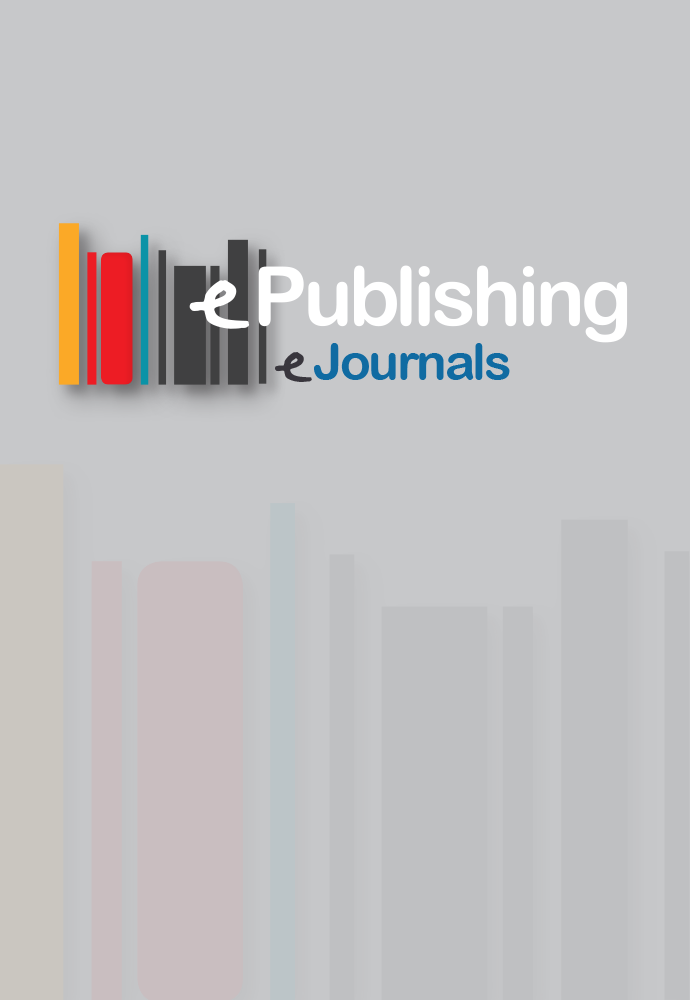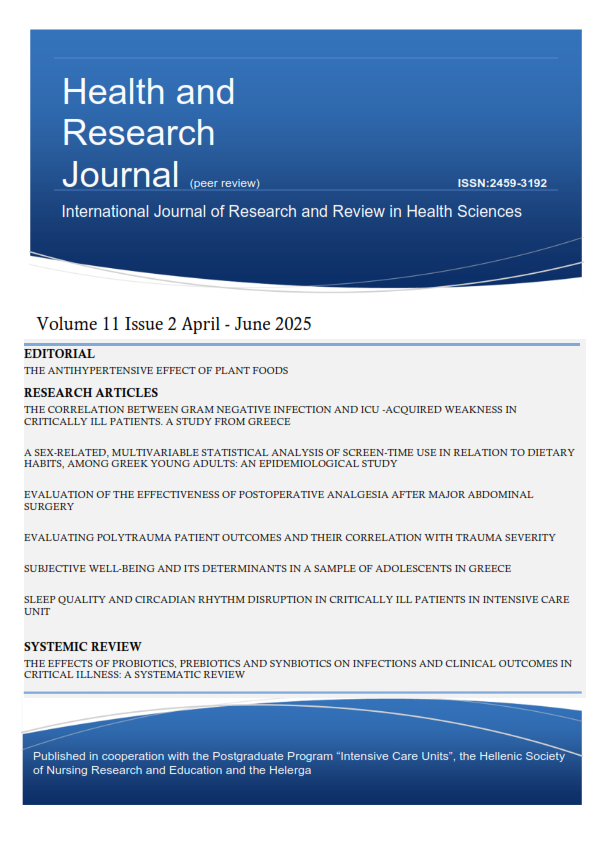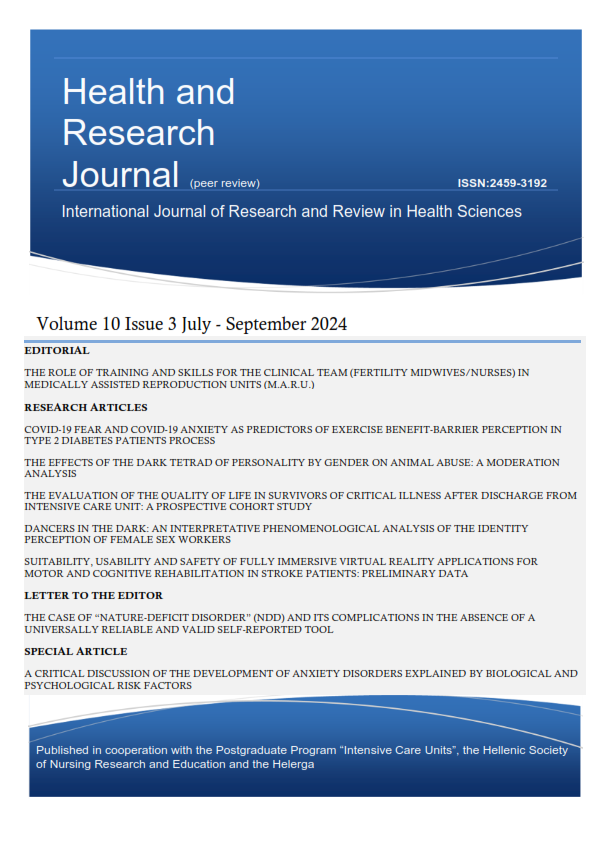Causes of admission of patients 18-30 years old in intensive care units
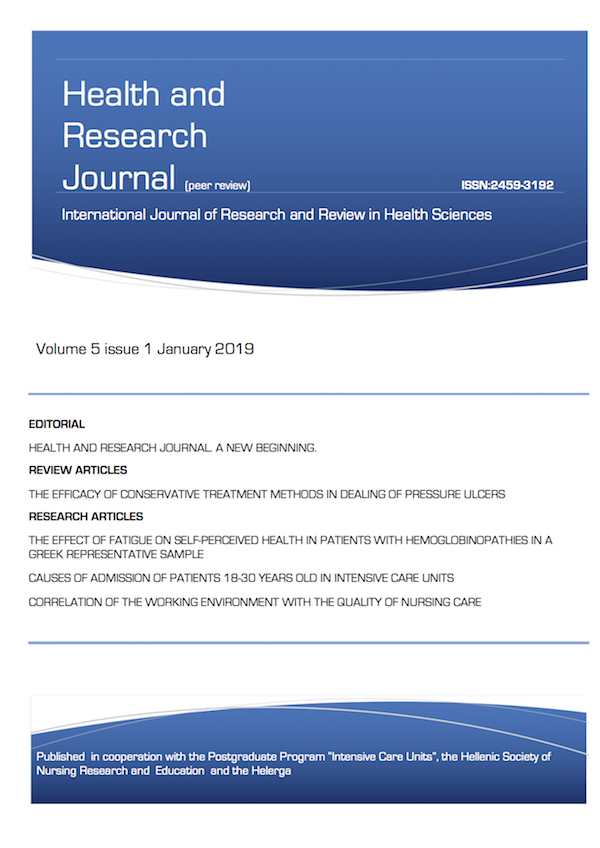
Abstract
Introduction: The causes that lead to the admission of young adults into Intensive Care Units (ICUs) are a multivariable phenomenon of modern times with a variety of social extensions.
Aim: The purpose of this study was to investigate the causes of admission of young adult population aged 18-30 in Intensive Care Units.
Method and material: The studied population consisted of people aged 18-30 years who were hospitalized in an Intensive Care Unit of Attica, Greece during the years 2016 and 2017. A specially formatted registration form was used to collect the data, which except for the demographic data, included variables related to the reasons of admission to ICU, the duration of the hospitalization, as well as the final outcome. The SPSS 23 statistical package and the x2 method were used to analyze the data.
Results: The 71.1% of the study population were male and 28.9% female. Regarding nationality, 81.1% were Greeks, while 18.9% were foreigners. As a first cause of admission to ICU was the road traffic accidents with percentage of 41.2%, followed by pathological causes with 32%, postoperative monitoring with 16.2%, suicide attempts at 4.4%, drug abuse at 3.5%, and work-related accidents at 2.6%. The statistical analysis of the results showed that men were more frequently admitted into the ICUs compared to women with a statistically significant difference p <0,000. The marital status does not seem to be related to the frequency of admission, which also applies to nationality, comparing the percentage of foreigners in the sample with the percentage of the population, there was no statistically significant difference. By studying the other social and demographic characteristics, there was a statistically significant dependence of the causes of admission both with the profession (p = 0.001) and with the place of residence (p = 0,013). The overwhelming majority (87.5%) of drug addicts and 50% of those who attempting to commit suicide were unemployed.
Conclusions: It is identified that demographic and social characteristics affect to a large extent the admission of young people into the ICU.
Article Details
- How to Cite
-
Monastirioti, M., Kalogianni, A., Vasilopoulos, G., & Papageorgiou, D. (2019). Causes of admission of patients 18-30 years old in intensive care units. Health & Research Journal, 5(1), 20–29. https://doi.org/10.12681/healthresj.19499
- Section
- Original Articles
Copyright notice:
The journal "Health and Research Journal" reserves the rights for copyright of the content of the website and also the copyright of the articles published.
By virtue of their appearance in this journal, the articles are free to be used for non-commercial purposes. However, the articles cannot and must not be used in anyway, published elsewhere or modified without any reference to the author and the first publication of the article.



